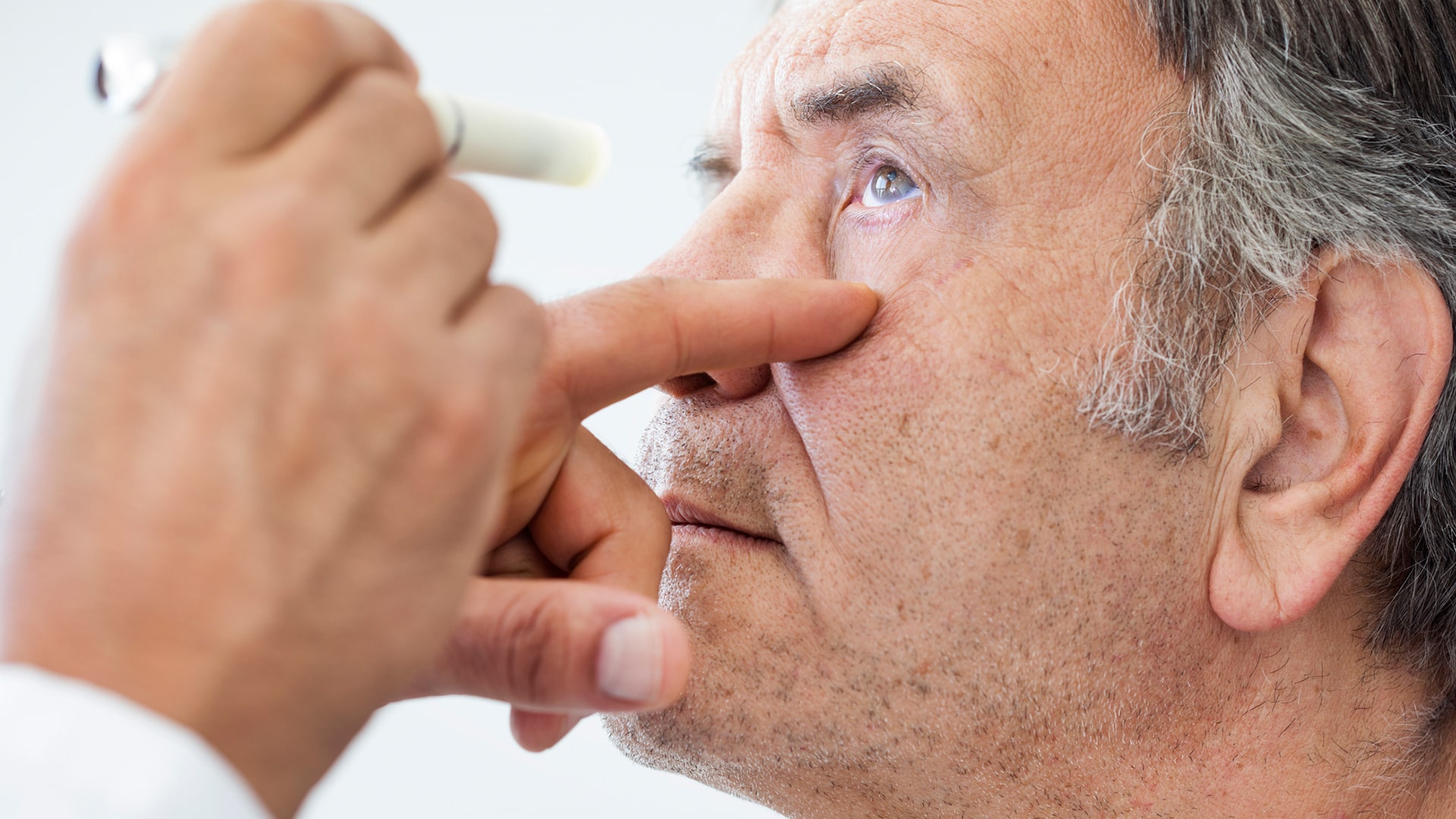Glaucoma affects more than 100 thousand Portuguese people, and this figure is rising due to an ageing population. Furthermore, this is one of the principal causes of blindness in Portugal, especially due to late diagnosis. Find out what glaucoma is, the causes and symptoms, and how to treat it.
Glaucoma: what is it?
Glaucoma is an eye disease characterised by increased pressure on the optical nerve, the part of the eye that is responsible for transmitting visual information to the brain. Although it is more common in cases of high intraocular pressure, glaucoma can also occur when this pressure is normal.
This disease is asymptomatic, in other words, there may not be any signs or symptoms, and patients are unaware that they are developing glaucoma. If untreated, the condition can lead to progressive loss of the visual field, which shrinks and becomes tubular until reaching blindness.
What are the types of glaucoma?
There are 4 types of glaucoma, which vary according to the type of visual field loss.
Open-angle glaucoma
This is the most common type of glaucoma, especially in people over 40 years old. It is usually painless and does not present symptoms until vision starts to decline. Once lost, eyesight cannot be recovered.
Angle-closure glaucoma
This is the most rare and serious form of glaucoma, and it constitutes an ophthalmological emergency. In this case, pressure on the eye increases rapidly and severely. This condition presents symptoms such as intense eye pain, nausea and blurred vision. Without medical intervention within the first few hours, patients with acute glaucoma can lose their eyesight irreversibly.
Secondary glaucoma
Secondary glaucoma occurs as a consequence of other pathologies, such as a trauma, diabetes or post-surgery. This condition can also take place after taking certain drugs, such as corticosteroids or antidepressants.
Congenital or juvenile glaucoma
This type of glaucoma is hereditary and occurs in infants, at birth. The condition results from increased intraocular pressure during pregnancy or within six months after birth. It affects 1 in every 10.000 newborns. Congenital glaucoma is rare but can be serious, and it is one of the principal causes of childhood blindness.
What are the symptoms of glaucoma?
In the early stages, there are usually no noticeable symptoms, which makes early detection challenging. As the disease progresses, symptoms can become more evident.
Symptoms depend on the type of glaucoma. In open-angle glaucoma, there is a gradual loss of peripheral vision, but this often goes unnoticed in the beginning. Patients acquire tunnel vision, seeing only what is directly in front of them. They may also have difficulty adapting to changes in lighting.
With angle closure glaucoma, the symptoms are more severe. The patient may experience intense eye pain, watery eyes, photophobia (sensitivity to light), blurred vision, nausea and vomiting. In this case, they should seek emergency medical assistance.
What are the causes of glaucoma?
Glaucoma is mostly caused by increased intraocular pressure, which damages the optic nerve. However, there are other causes that can lead to the development of this disease, such as:
• High intraocular pressure. This is the most common risk factor, but not all people with high intraocular pressure develop glaucoma. Likewise, people with normal pressure can also develop this condition.
• Genetic factors. Glaucoma can be hereditary. When someone has a close relative with glaucoma, the risk of developing this disease is higher.
• Age. The risk of glaucoma increases with age, and it is more common in older people.
• Medical history. Certain diseases, like diabetes, high blood pressure and cardiovascular diseases, can increase the risk of glaucoma.
• Prolonged use of corticosteroids. Long-term use of medication containing corticosteroids can increase intraocular pressure in some people, raising the risk of glaucoma.
How is glaucoma diagnosed?
Glaucoma is diagnosed through various clinical tests, imaging exams and by measuring intraocular pressure.
• Measuring intraocular pressure. Interocular pressure is measured using a device called a tonometer. This exam is simple, painless and allows quick and accurate measurements.
• Fundoscopic examination. In this examination, the physician shines a light into the patient’s eye, observing it with a lens to study the optic nerve and detect signs of damage.
• Gonioscopy. This procedure involves placing magnifying lenses on the patient’s cornea for the physician to examine the drainage angle and classify the glaucoma.
If necessary, complementary structural and functional examinations may be performed, such as computerised static perimetry, to evaluate the visual field, scanning laser polarimetry, optical coherence tomography or pachymetry.






